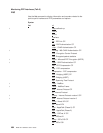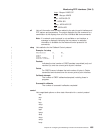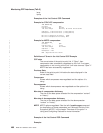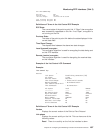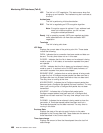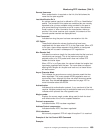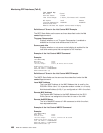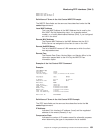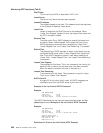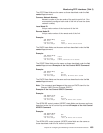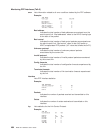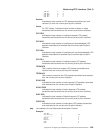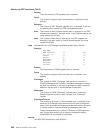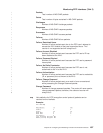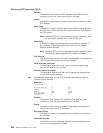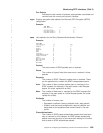DHCP State
This is the Proxy DHCP as described in RFC 1541.
Lease Server
The server from which the lease was acquired.
Leased IP address
The address leased to the client. This address should be equivalent
to the “Remote IP Address” listed above.
Lease Time
Length of lease from the DHCP server for this address. When
“Lease Time Elapsed” equals this time, the lease will be expire and
the IPCP connection closed.
Renewal Time
Time after which Proxy DHCP attempts to extend this lease from
the server. When “Lease Elapsed Time” equals this time, Proxy
DHCP attempts to renew the lease, resetting the “Lease Time,”
“Lease Elapsed Time,” and “Lease Time Remaining,” if successful.
Rebind Time
Time before Proxy DHCP attempts to obtain a new lease from any
configured DHCP server. When “Lease Elapsed Time” equals this
time, Proxy DHCP attempts to obtain a new lease, resetting the
“Lease Time,” “Lease Elapsed Time,” and “Lease Time Remaining,”
if successful.
Leased Time Elapsed
Time elapsed for this lease. This is not necessarily the time for this
particular dial-in session, as the lease may have been renewed.
When the lease is renewed, this timer is set back to 0.
Leased Time Remaining
Time remaining for this lease. This parameter is equal to “Lease
Time” minus “Lease Time Elapsed.”
DHCP client ID
A unique ID for this client (dial-in user). All DHCP messages are
identified to and from the DHCP server by this client ID.
Example of the List Control IPXCP Command
Example:
list control ipxcp
IPXCP State: Closed
Previous State: Closed
Time Since Change: 2 hours, 9 minutes and 9 seconds
The IPXCP state fields are the same as those described under the list
control lcp command.Example of the List Control ATCP Command
Example:
list control atcp
ATCP State: Closed
Previous State: Closed
Time Since Change: 6 hours, 27 minutes and 7 seconds
AppleTalk Address Info:
Common network number = 12
Local node ID = 49
Remote node ID = 76
Definitions of Terms in the List Control ATCP Example
Monitoring PPP Interfaces (Talk 5)
492
MRS V3.2 Software User’s Guide



